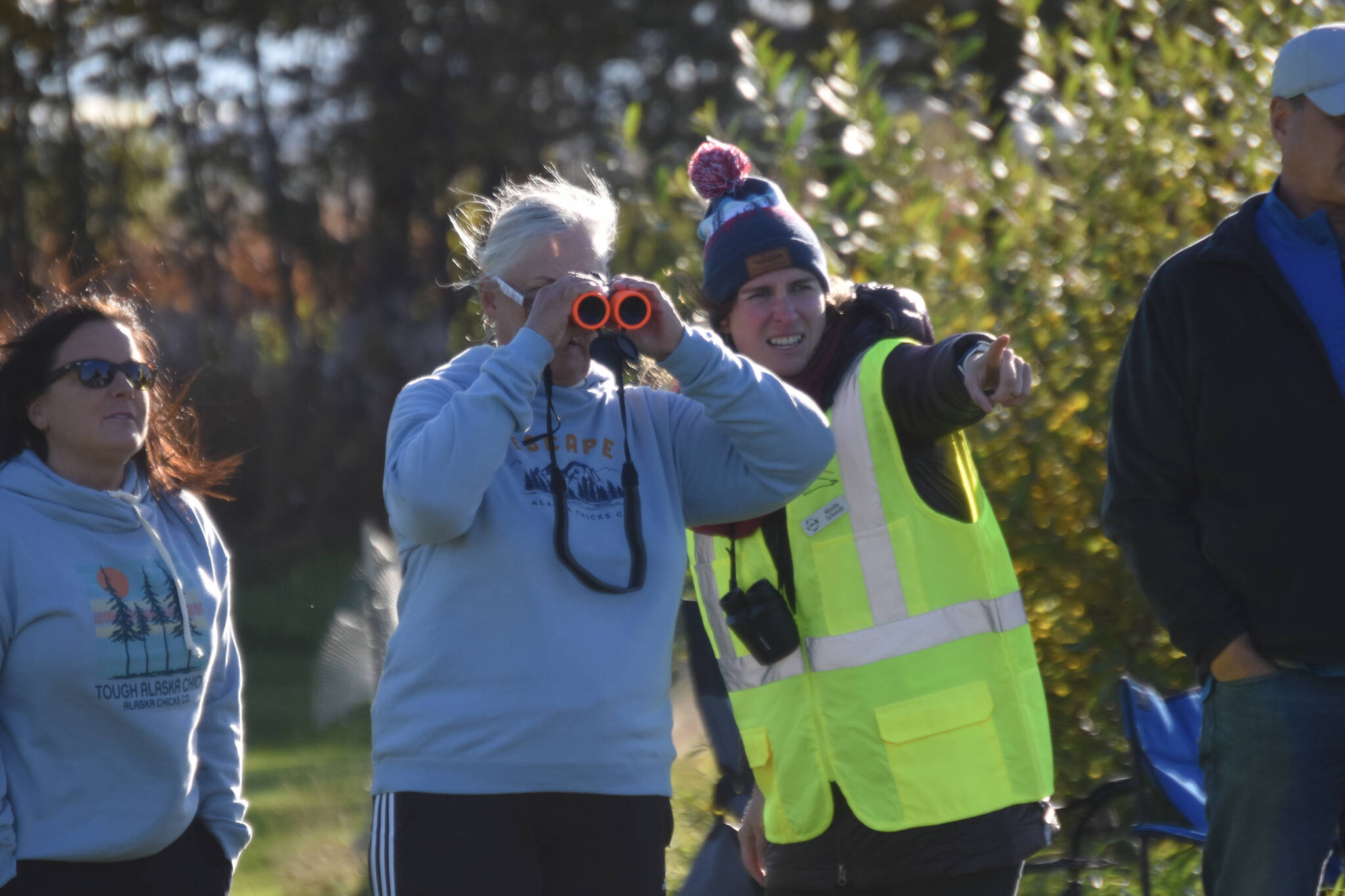Clear blue skies and a shining sun belied blustering winds at the Kenai viewing station for Belugas Count! down Spur View Drive, but the wind wasn’t enough to deter professionals and the public alike from showing up to catch a glimpse of the endangered Cook Inlet beluga on Saturday.
The National Oceanic and Atmospheric Administration holds Belugas Count! event annually, though the last few years were canceled due to the COVID-19 pandemic. Professionals from around the nation gathered alongside local organizations and the public to see and learn about the endangered population in an event designed to educate and call for action to preserve.
Fourteen viewing stations were set up around Cook Inlet, in Kenai, Homer, Hope, Tyonek, Girdwood, Portage, the Seward Highway and Anchorage. There were also several counting stations on oil platforms owned by Hilcorp and Glacier Oil and Gas participating.
The Kenai viewing station was staffed by representatives from the Alaska Wildlife Alliance, Kenai Peninsula College, the Georgia Aquarium and the Shedd Aquarium.
Wildlife Alliance Director Nicole Schmitt said this year’s event was “amazing.”
The station was set up right on the bluff by the Kenai Senior Center and Schmitt said the belugas were coming right up under the bluff as they passed down the Kenai River.
“Anywhere from 12 to 16 coming so close.” she said. “I have not seen belugas come that close while monitoring out here. It was really great to have so many community members up, and students. Kind of a dream.”
As the station opened, everyone who came had the opportunity to see a beluga — if not several — with staffers going around and making sure every attendee had seen one. Even a little after 10 a.m., four or five could still be seen passing out of the mouth of the Kenai River and into Cook Inlet.
The belugas were close enough that they could be spotted even without using cameras or binoculars, though almost everyone who showed up came with some equipment. A couple of folks even brought lawn chairs for extended viewing.
The professionals working the event said that after they passed through, the beluga would likely not return until after 4 p.m., well after the station was scheduled to close.
Families and couples were regularly coming and going, even in the hours after the belugas had passed through, and the professionals working the event spent time talking to them about the belugas, also handing sticker sheets to the kids.
Cook Inlet belugas are one of five populations of the species in Alaska. They are the smallest, and the only one to be registered endangered, a classification they’ve held since 2008.
“We do know that the population continues to decline,” Schmitt said. “About 2.3% every year.”
NOAA has a program called “Species in the Spotlight,” which identifies endangered or threatened species that have a path to recovery. Cook Inlet belugas have been on that list since the program’s inception in 2015.
Professionals believe that fewer than 300 belugas remain in the population.
“We did see some babies, some calves, that’s really exciting.” Schmitt said.
“This is a critically endangered species right in our backyard, and people in Kenai, Soldotna and Kasilof are really fortunate to have the opportunity to interact with an endangered species.”
Schmitt said beyond Belugas Count! there are other events and opportunities happening throughout the year. More information about the Alaska Wildlife Alliance can be found at akwildlife.org.
A text alert system for Cook Inlet beluga sightings is also managed by the Alaska Wildlife Alliance, and interested individuals can sign up by texting the word beluga to 833-541-0408.
Reach reporter Jake Dye at jacob.dye@peninsulaclarion.com.

